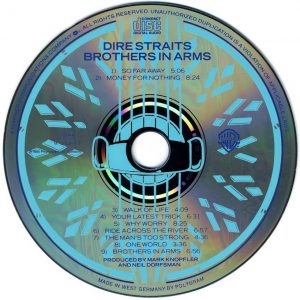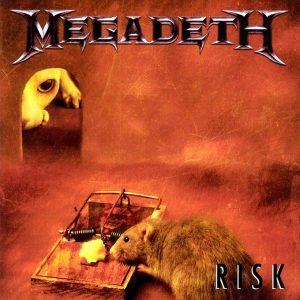For R.E.M., 1986 had been a pivotal year. The band’s fourth album, the brash, yet highly accessible Lifes Rich Pageant had rewarded them with their first gold disc, while their extensive Pageantry tour of the US had garnered considerable critical acclaim. As 1987 rolled around, confidence was at a high within the R.E.M. camp. The Athens, Georgia, quartet had already worked up a clutch of promising new songs for what would become their fifth album, Document, and they had completed a successful initial studio session with new producer Scott Litt prior to Christmas ’86.
Listen to R.E.M.’s Document on Apple Music and Spotify.
Litt had already assembled an impressive CV. He began his career as a studio engineer during the late 70s, working on recordings by artists as diverse as Carly Simon and Mott The Hoople’s Ian Hunter. He debuted as a producer in 1982 with The dB’s Repercussion album, a record R.E.M. was already familiar with, having shared stages with the band. In fact, the two groups’ histories would continue to intertwine when The dB’s co-frontman, Peter Holsapple, later joined R.E.M. as their fifth member on the Green tour and then played on Out Of Time.
R.E.M. and Litt began their fruitful, decade-long partnership with the successful recording of the quirky “Romance.” Though intended for the soundtrack of the film Made In Heaven, the song also later featured on the rarities compilation Eponymous. Litt reconvened with the band at their regular demo studio – John Keane in Athens – for an extensive demo session, before R.E.M. took a break and briefly embarked on extracurricular activities, including some studio contributions to Warren Zevon’s Sentimental Hygiene album.
The band was back in the harness with their new producer at the end of March, with all of April ’87 given over to the recording of Document at Sound Emporium Studios in Nashville, Tennessee. Several of the songs had already been worked up onstage, and the band’s keen pre-production work paid dividends: for Document, R.E.M and Scott Litt captured the sound of a rock band at the absolute top of their game, capable of taking on all comers.
The accessibility that seeped from Lifes Rich Pageant’s every pore was again apparent, but this time around the band had taken things up a gear. Indeed, the R.E.M. of Document was a sinewy, muscular rock beast, primed and ready to dominate the airwaves. Peter Buck’s distinctive jangle and chime were still apparent on “Disturbance At The Heron House” and “Welcome To The Occupation,” but, for the most part, his guitar playing took on a sharp, steely quality. Accordingly, he turned in some of his most memorable recorded performances: launching “Finest Worksong” with urgent, metallic riffs; embroidering the swampy funk of “Lightnin’ Hopkins” with Andy Gill-esque tension and atonality; and punctuating the band’s supercharged cover of Wire’s “Strange” with a neat, Nuggets-style psych-pop solo.
Meanwhile, the newfound confidence and vocal clarity Michael Stipe proffered on Lifes Rich Pageant continued apace, and on Document he summoned up a clutch of startling performances: bending and twisting his voice like an old-time preacher around “Lightnin’ Hopkins” and rattling off a rapid-fire alternate history of the 20th Century on the exhilarating “It’s The End Of The World As We Know It (And I Feel Fine).”
Lyrically, the socio-political concerns Stipe addressed on Lifes Rich Pageant again loomed large. Featuring barbed observations such as “Listen to the Congress where we propagate confusion/Primitive and wild, fire on the hemisphere below,” “Welcome To The Occupation” was widely reputed to be a commentary on American intervention in South America. The deceptively infectious “Exhuming McCarthy” also delved into political hypocrisy, drawing a parallel between the communist-baiting of the Joe McCarthy era of 50s American politics and the recent Iran-Contra affair during which senior politicians under President Ronald Reagan had secretly facilitated the sales of arms to Iran: a country which was then under an arms embargo.
Sonically, Document also afforded the band the chance to further broaden their palette. Special guest, Los Lobos’ Steve Berlin, added his distinctive saxophone skills to “Fireplace,” while lap steel and dulcimer colored the hypnotic, raga-like “King Of Birds.” From their earliest days recording Murmur with Don Dixon and Mitch Easter, R.E.M. had always relished the opportunity to try out different sounds and textures – an experimental approach that would continue through Green and Out Of Time, wherein the band members often swapped instruments and fashioned new songs from riffs and melodies worked up on acoustic instruments such as mandolins and accordions.
The spine of the artwork for R.E.M.’s second album, Reckoning, had featured the message “File Under Water” and the original sleeve design for Document included another elemental phrase, “File Under Fire.” Michael Stipe considered fire to be one of the record’s central lyrical themes, with the album also including the song “Fireplace” and the eerie, religion-related “Oddfellow’s Local 151,” on which the chorus consisted of Stipe repeatedly keening the word “Firehouse!” Document’s savage break-out single “The One I Love” again included a chorus wherein Stipe sang “Fire!”, and while this emotionally vicious song itself was actually the very antithesis of a traditional love song, it still provided R.E.M. with their first major US hit single when it peaked at No.9 on the Billboard singles chart.
Document followed through on the success of “The One I Love,” peaking at an impressive No.10 on the Billboard 200 in September 1987. The band’s heavy touring schedule across the past five years now yielded far greater dividends as Document proved to be a hit in numerous territories, peaking at No.28 in the UK (where it also went gold), No.17 in New Zealand, and No.13 in Canada, where it earned a platinum disc for the band.
The press agreed en masse that R.E.M. had again conjured up something special with Document. Always one of rock’s most insightful writers, Rolling Stone’s David Fricke was impressed by Stipe’s continued prowess as a frontman (“His vocals, which are upfront in the mix, are as crisp and distinct as they’ve ever been, full of emotional portent and physical insistence”) before he cogently summed up his review with: “Document is the sound of R.E.M. on the move, the roar of a band that prides itself on the measure of achievement and the element of surprise.” Elsewhere, New York Times critic Robert Christgau weighed in with, “Their commercial breakthrough eschews escapism without surrendering structural obliqueness,” and the Los Angeles Times praised: “A tougher, meaner, leaner album than its immediate predecessors, with a far more hard-edged guitar sound and tenser rock rhythms.”
The group filmed promotional videos for Document’s spearhead singles, “The One I Love” (directed by New York artist Robert Longo) and “It’s The End Of The World As We Know It (But I Feel Fine),” for which R.E.M. turned to their long-term friend Jim Herbert, also the director of photography for the rock documentary Athens Georgia Inside-Out. In readiness for their next bout of touring, the band embarked on a series of interviews, including one with Rolling Stone, wherein Peter Buck cautiously stated: “I don’t see this as the record that’s going to blast apart the chart.”
From the onset of the band’s European tour, however, it was clear that R.E.M. was indeed ready to sell a large number of records and slough off the shackles of cultdom for good. The band’s Work tour kicked off with a rapturously received show at one of London’s premier indoor venues, the Hammersmith Odeon, and continued with the band playing to packed houses in The Netherlands, Germany, and at La Cigale in the French capital, Paris.
Taking 10,000 Maniacs (and, later, The dB’s) along as their support, R.E.M. launched into the American leg of their Work tour with a show at the University Of Tennessee in Knoxville, on 1 October, and traversed North America and Canada until the end of November, playing around 45 shows in all. Along the way, they performed some of their most prestigious gigs to date, including a two-night stand at one of their favorite stamping grounds, New York’s Radio City Music Hall.
While the band was on the road, they received word that Document had already earned them a gold disc in the first week of November and, by January 1988, on the back of the band’s inaugural Rolling Stone cover, it had gone platinum in North America. With Michael Stipe and company just months away from signing a major new deal with Warner Bros, it seemed that the sky would be the limit for R.E.M.




